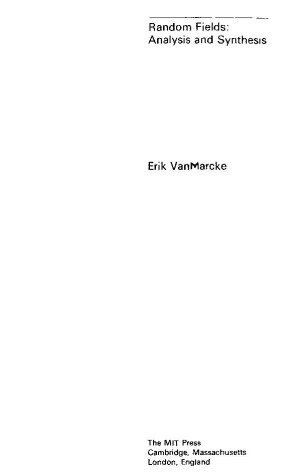Random variation over space and time is one of the few attributes that might safely be predicted as characterizing almost any given complex system. Random fields or "distributed disorder systems" confront astronomers, physicists, geologists, meteorologists, biologists, and other natural scientists. They appear in the artifacts developed by electrical, mechanical, civil, and other engineers. They even underlie the processes of social and economic change. The purpose of this book is to bring together existing and new methodologies of random field theory and indicate how they can be applied to these diverse areas where a "deterministic treatment is inefficient and conventional statistics insufficient." Many new results and methods are included.After outlining the extent and characteristics of the random field approach, the book reviews the classical theory of multidimensional random processes and introduces basic probability concepts and methods in the random field context. It next gives a concise amount of the second-order analysis of homogeneous random fields, in both the space-time domain and the wave number-frequency domain. This is followed by a chapter on spectral moments and related measures of disorder and on level excursions and extremes of Gaussian and related random fields.After developing a new framework of analysis based on local averages of one-, two-, and n-dimensional processes, the book concludes with a chapter discussing ramifications in the important areas of estimation, prediction, and control. The mathematical prerequisite has been held to basic college-level calculus.
- ISBN10 0262220261
- ISBN13 9780262220262
- Publish Date 15 March 1983
- Publish Status Out of Print
- Out of Print 13 May 1998
- Publish Country US
- Publisher MIT Press Ltd
- Imprint MIT Press
- Format Hardcover
- Pages 372
- Language English
